US Constitution Worksheets
Do you want to save dozens of hours in time? Get your evenings and weekends back? Be able to teach about the US Constitution to your students?
Our worksheet bundle includes a fact file and printable worksheets and student activities. Perfect for both the classroom and homeschooling!
Resource Examples
Click any of the example images below to view a larger version.
Fact File
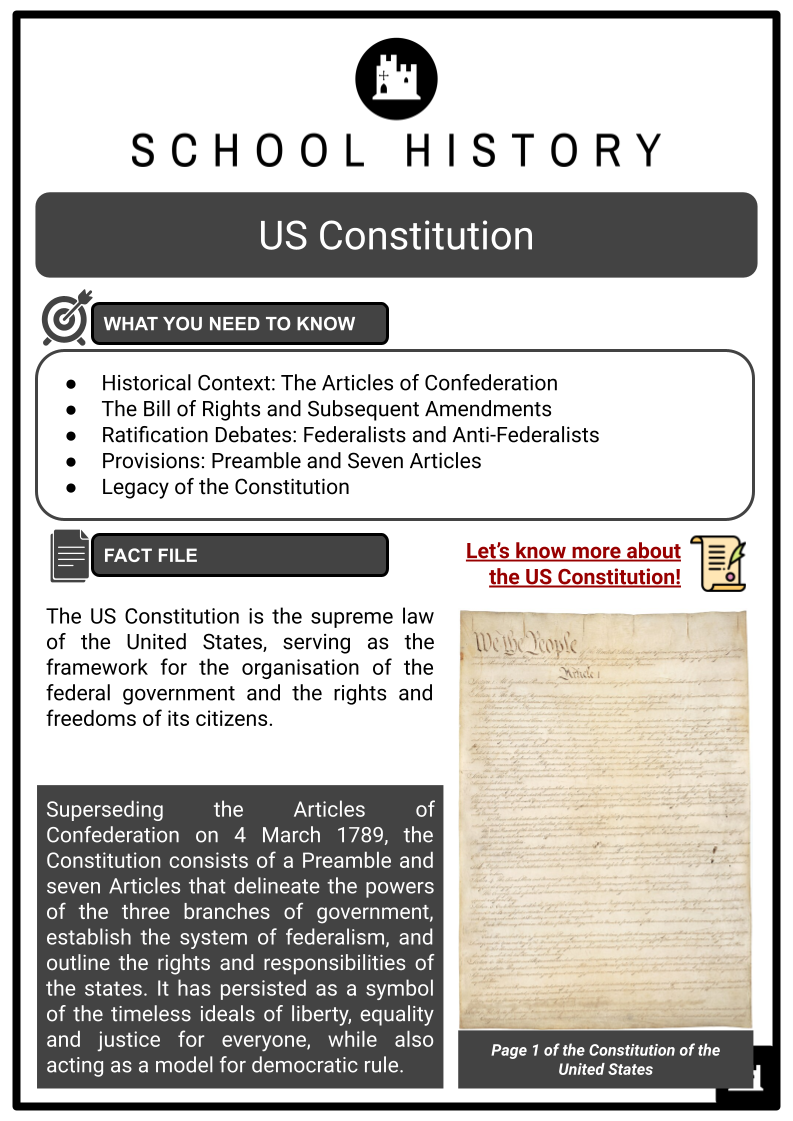
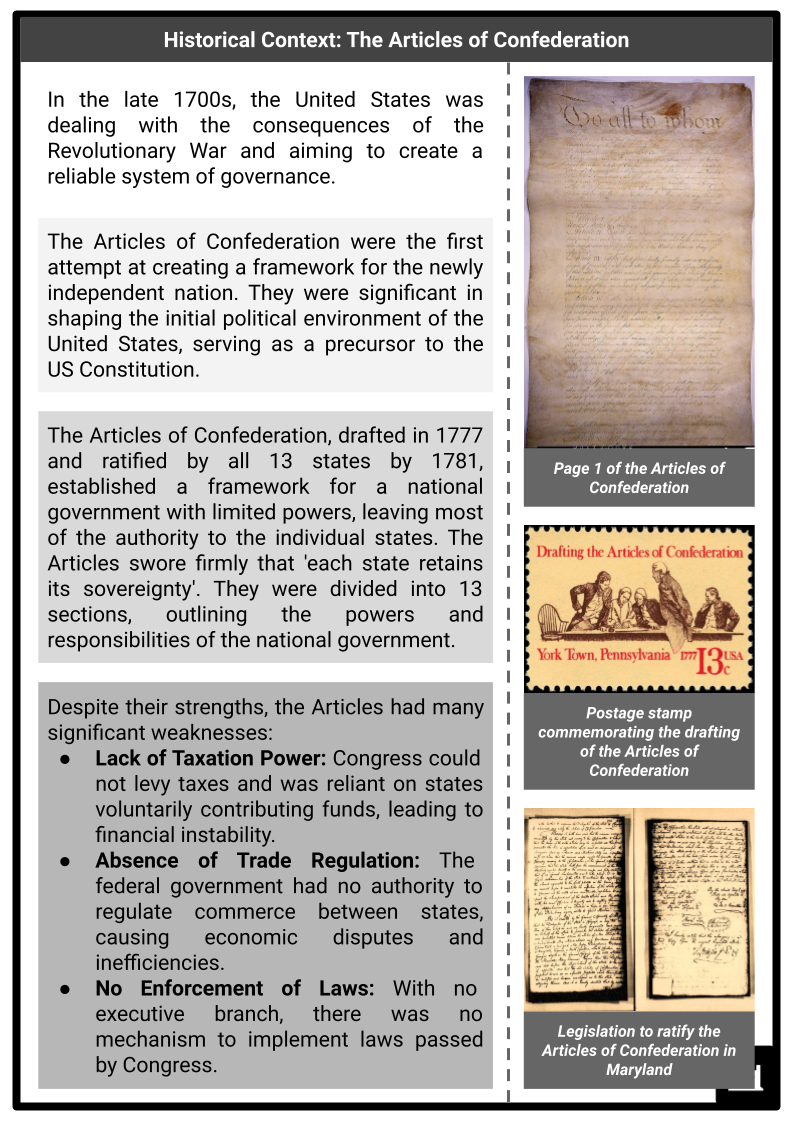
Student Activities
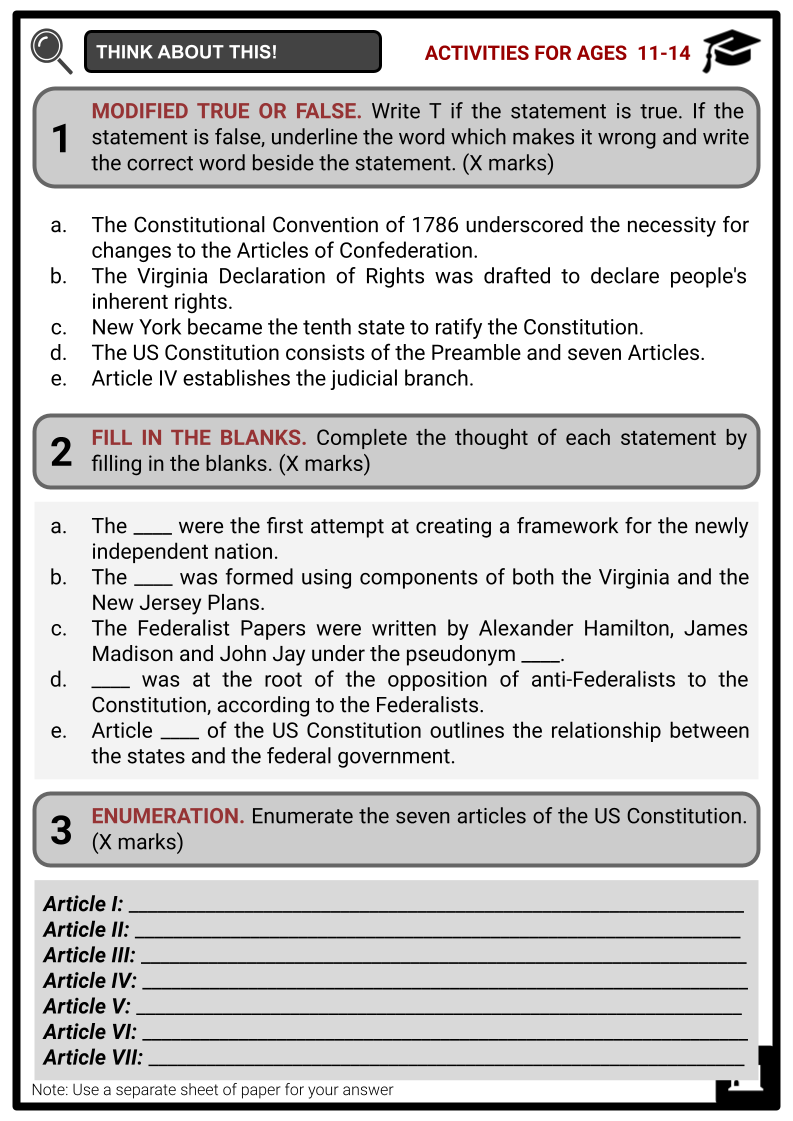
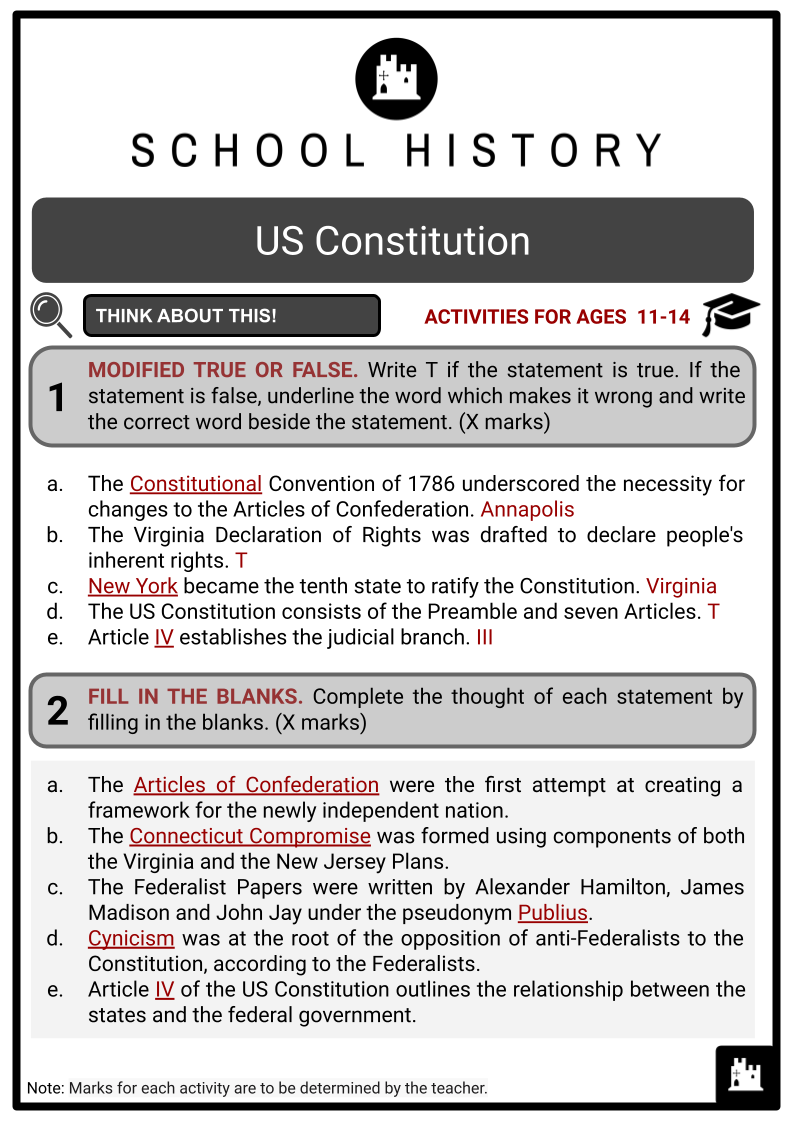
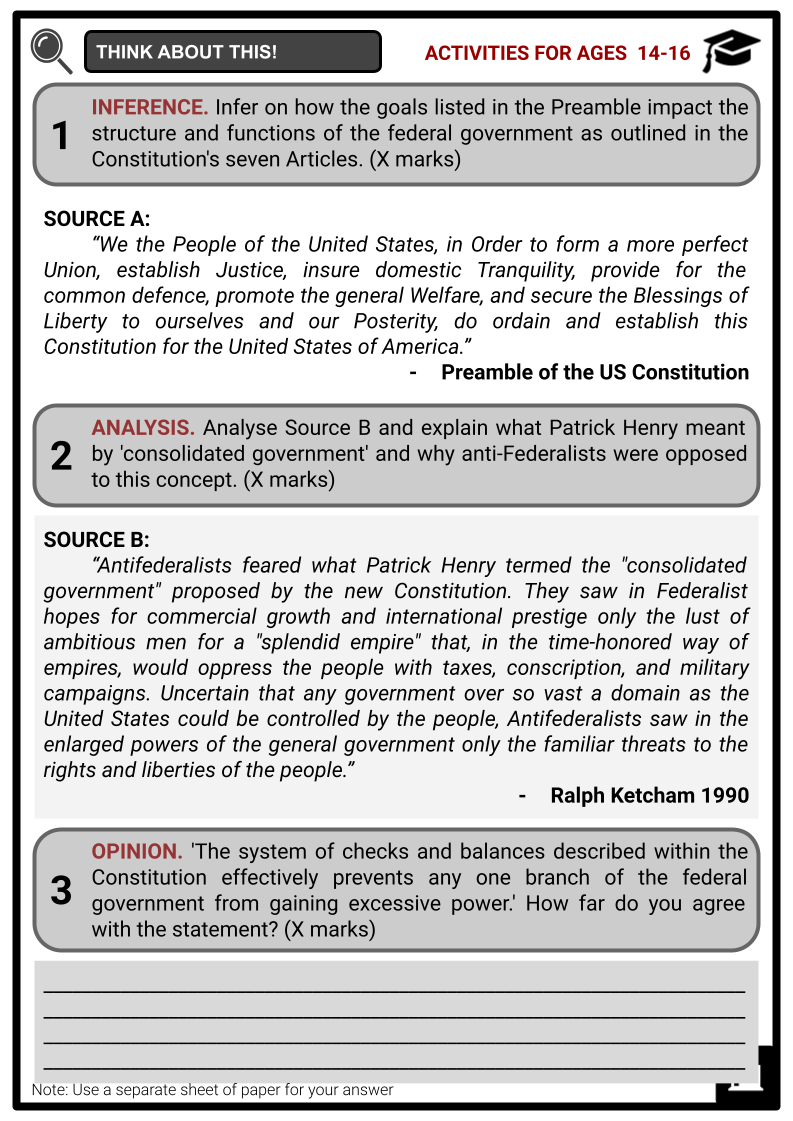
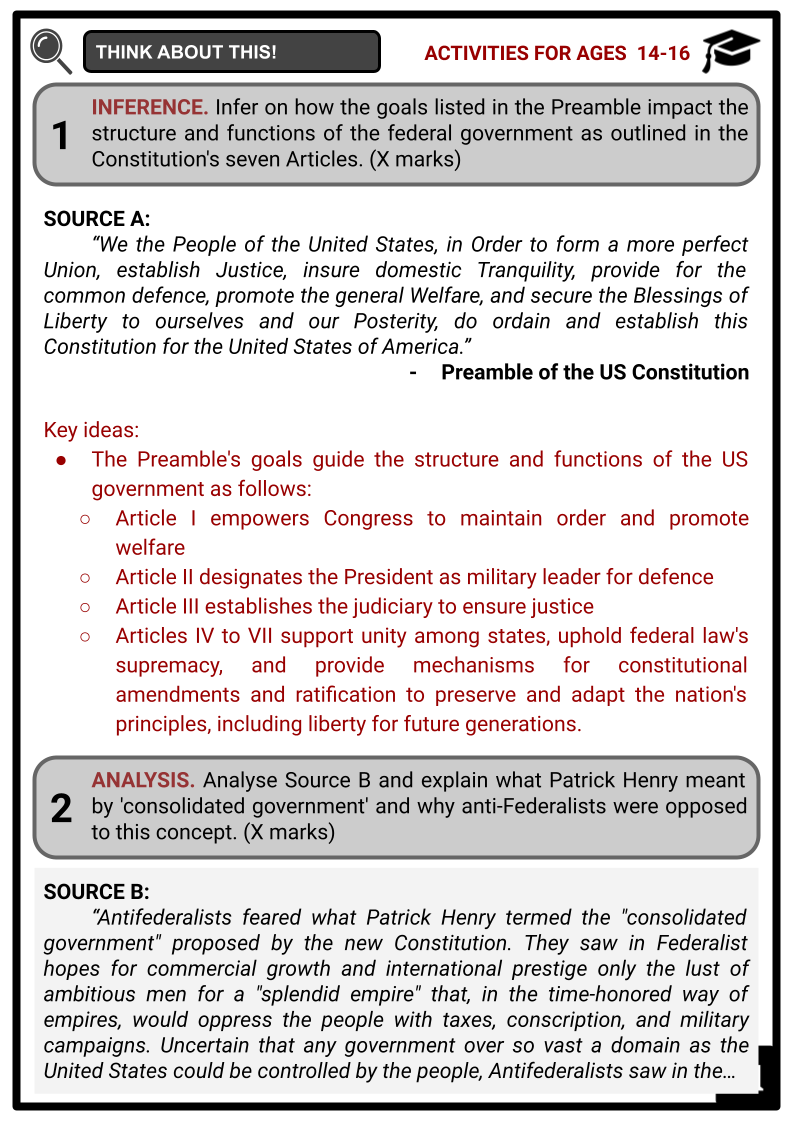
Summary
- Historical Context: The Articles of Confederation
- The Bill of Rights and Subsequent Amendments
- Ratification Debates: Federalists and Anti-Federalists
- Provisions: Preamble and Seven Articles
- Legacy of the Constitution
Key Facts And Information
Let’s know more about the US Constitution!
The US Constitution is the supreme law of the United States, serving as the framework for the organisation of the federal government and the rights and freedoms of its citizens. Superseding the Articles of Confederation on 4 March 1789, the Constitution consists of a Preamble and seven Articles that delineate the powers of the three branches of government, establish the system of federalism, and outline the rights and responsibilities of the states. It has persisted as a symbol of the timeless ideals of liberty, equality and justice for everyone, while also acting as a model for democratic rule.
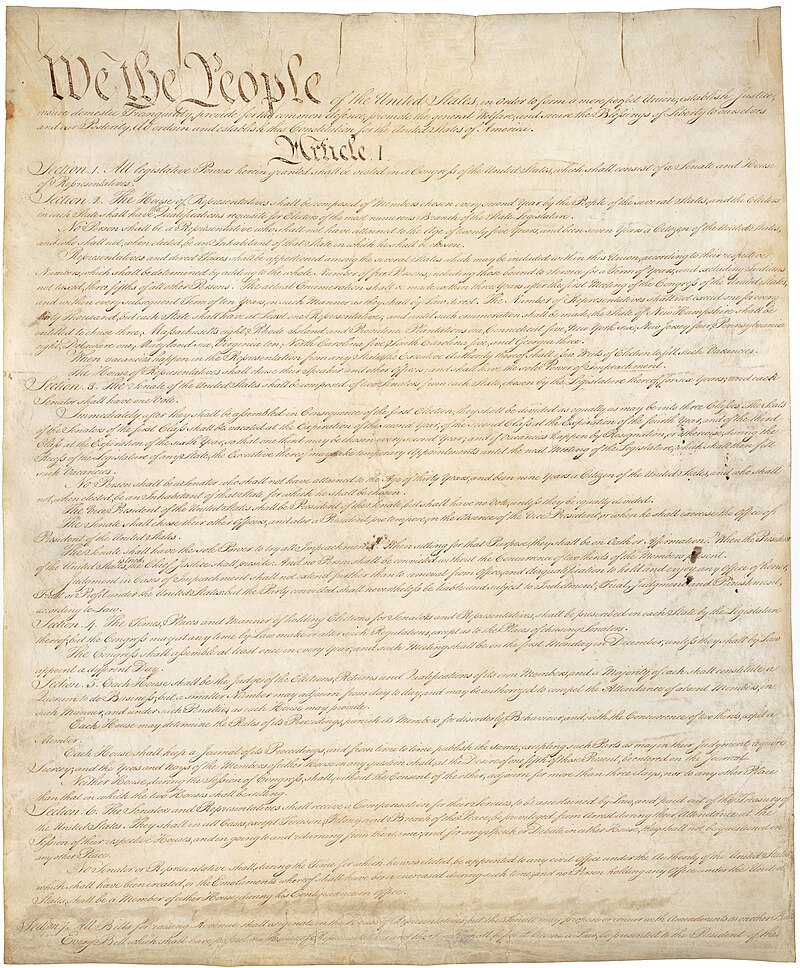
Historical Context: The Articles of Confederation
- In the late 1700s, the United States was dealing with the consequences of the Revolutionary War and aiming to create a reliable system of governance.
- The Articles of Confederation were the first attempt at creating a framework for the newly independent nation. They were significant in shaping the initial political environment of the United States, serving as a precursor to the US Constitution.
- The Articles of Confederation, drafted in 1777 and ratified by all 13 states by 1781, established a framework for a national government with limited powers, leaving most of the authority to the individual states. The Articles swore firmly that 'each state retains its sovereignty'. They were divided into 13 sections, outlining the powers and responsibilities of the national government.
- Despite their strengths, the Articles had many significant weaknesses:
- Lack of Taxation Power: Congress could not levy taxes and was reliant on states voluntarily contributing funds, leading to financial instability.
- Absence of Trade Regulation: The federal government had no authority to regulate commerce between states, causing economic disputes and inefficiencies.
- No Enforcement of Laws: With no executive branch, there was no mechanism to implement laws passed by Congress.
- Inadequate Judicial System: Without a judicial system at the federal level, disputes among states or questions of law could not be effectively resolved.
- Equal State Representation: Each state had one vote in Congress, regardless of size or population, resulting in imbalances.
- Difficulty in Amending Articles: Unanimous consent was required for any amendments, making it nearly impossible to adapt the government structure when needed.
- No Standing Army or Navy: Congress had no power to maintain a permanent military, leaving the nation vulnerable.
- Lack of Central Leadership: The absence of a strong executive led to challenges in cohesive leadership and action.
- No National Currency: The lack of a unified currency system created financial disorder.
- State Power over Congress: States could ignore requests from Congress for troops or funds, undermining the federal government's authority.
- The shortcomings of the Articles of Confederation resulted in widespread dissatisfaction and unrest among the people, triggering a call for a stronger central government. The Annapolis Convention of 1786 underscored the necessity for changes to the Articles of Confederation, ultimately leading to the Constitutional Convention in 1787. This convention proposed a new constitutional framework instead of revising the existing Articles.
- Despite the abandonment of the Articles of Confederation, their impact continued to be felt in the political and social fabric of the nation. While flawed, the Articles laid the foundation for America's current system of government.
The Bill of Rights and Subsequent Amendments
- The Constitutional Convention in Philadelphia took place from 25 May to 17 September 1787, with a significant debate on the structure of the legislative branch of government. James Madison, a Virginia delegate, proposed the Virginia Plan, which called for a bicameral government with population-based representation.
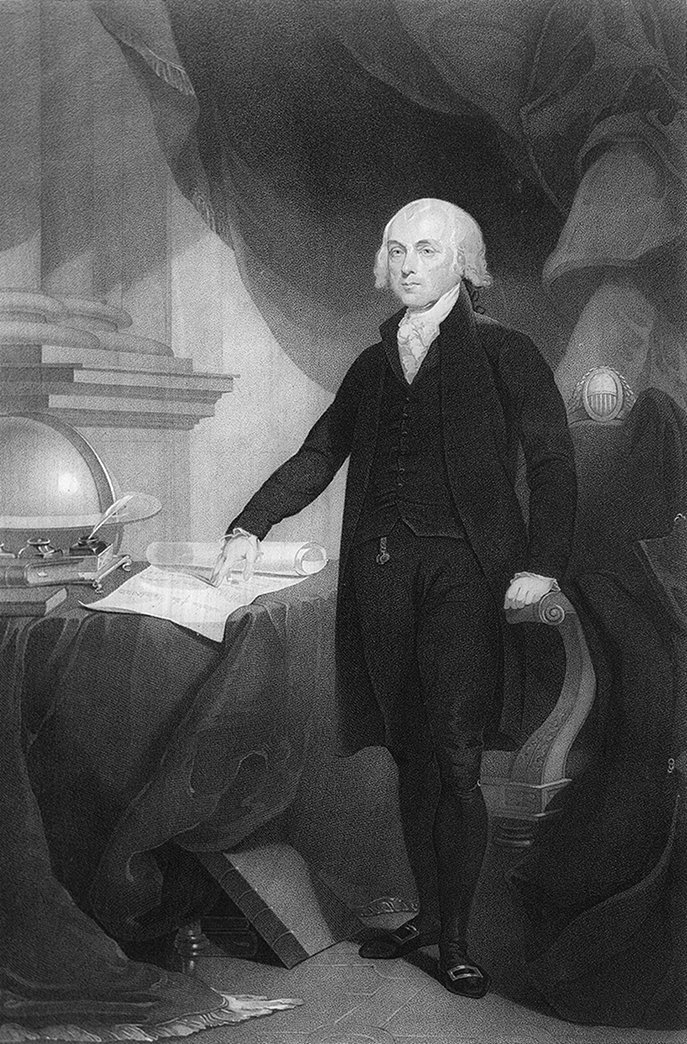
- The larger states supported this idea, as it would give them better representation due to their larger populations. However, smaller states, led by William Paterson, opposed the Virginia Plan and proposed the New Jersey Plan, which offered a unicameral legislature.
- The Connecticut Compromise was formed using components of both the Virginia and the New Jersey Plans. The legislative branch would be bicameral, with an upper house called the Senate and a lower house called the House of Representatives.
- The House would be represented based on population, and each state would be assigned two Senate members. The president would exercise executive authority and be elected by the electoral college.
- The Constitution had to be ratified by the assemblies of at least 9 of the 12 states that had sent delegates to the convention. Surprisingly, smaller states were the first to ratify the Constitution, despite heated arguments over legislative representation.
- Many opponents of the Constitution argued that it would establish a huge, intrusive and far-too-powerful federal government that would inevitably reproduce the tyranny that the Patriots fought against during the American Revolution.
- The Federalists won the first US Congress, assembled in New York City's Federal Hall. The 11-state Senate had 20 Federalists and only 2 anti-Federalists, both from Virginia. The House was divided into 48 Federalists and 11 anti-Federalists, with the latter hailing from just 4 states: Massachusetts, New York, Virginia and South Carolina. James Madison was among the Virginia delegation to the House.
- Madison proposed several constitutional amendments to the House of Representatives for debate, including the addition of introductory wording emphasising natural rights in the Preamble and extending the Bill of Rights provisions to both states and the federal government. He also sought ideas agreed upon by numerous states to decrease future ratification opposition.
- The Virginia Declaration of Rights was drafted to declare men’s inherent rights, including the right to modify or abolish an inadequate government. Federalist delegates quickly criticised Madison's suggestion, arguing that any attempt to change the new Constitution so soon after its adoption would create the appearance of instability in the government.
- The first ten amendments were submitted by Congress in its first session in 1789. After being ratified by three-quarters of the legislatures in the various states, they became a part of the Constitution on 15 December 1791 and are known as the Bill of Rights.
Ratification Debates: Federalists and Anti-Federalists
- The constitutional review process was the result of a unanimous resolution to revise the Articles of Confederation. Supporters of the Constitution were called 'Federalists' since federalism was understood as being the opposite of centralised power. Benjamin Franklin and George Washington were proponents of federalism.
- Written by Alexander Hamilton, James Madison and John Jay under the pseudonym 'Publius', the Federalist Papers argued for the ratification of the Constitution. In 1787, the Constitution was debated and drafted during the Constitutional Convention in Philadelphia, and then later presented to the states for ratification.
- The Federalist Papers were intended as a series of papers or essays to be published in New York newspapers, but they expanded into a collection of 85 essays, published as volumes in March and May 1788. The primary objective of the collection of essays was to promote the sufficiency of the Constitution to address the concerns of a strong central government vis-à-vis state powers.
- On Factions and Interests: Federalist No. 10 was considered the most important essay from a philosophical viewpoint. It highlighted the inevitability of factions, since they are part of human nature. It discussed means to prevent rule by majority factions.
- On the Extended Republic: Madison argued in Federalist No. 14 that an extended republic was suitable in the context of the United States, despite its huge size. He explained the composition of the Union, which has both federal and state governments.
- On Being a 'Federal' Nation: In Federalist No. 39, Madison argued for the case of the United States being a 'federal' nation. He also explained what constitutes a republic, emphasising that citizens elect representatives to make decisions for them.
- On Checks and Balances: Checks and balances in the federal government were the main focus of Federalist No. 51, where Madison advocated to prevent usurpations. Also, the document advances the idea of the separation of powers within government.
- On Branches of Government: Alexander Hamilton brought the case for a one-man chief executive and the executive power in Federalist No. 70. Also, he laid the foundation for the doctrine of judicial review of the federal courts in Federalist No. 78.
- On Bill of Rights: Opposition towards amending the Constitution for the inclusion of the Bill of Rights was expressed by Hamilton in Federalist No. 84. He argued that the provisions in the Constitution were enough to safeguard people's rights.
- The essays in The Federalist Papers were purposefully written in support of the ratification of the proposed Constitution. Much effort was poured into New York since only 19 federalists were elected to the state's constitutional convention against 47 anti-Federalists.
- Virginia became the tenth state to ratify the Constitution, putting New York under pressure to do the same. There was a lack of support for the Federalists, which put the state's ratification of the Constitution into question. Only a slim majority of New York delegates at the convention ratified the Constitution, with the condition that the Bill of Rights must be included. The Federalist Papers 'failed' in the sense that they did not sway New York voters to elect delegates who would fully support the Constitution's ratification.
- Cynicism was at the root of the opposition of anti-Federalists to the Constitution, according to the Federalists. The most prominent anti-Federalists were Samuel Adams and Patrick Henry, whose main concern was that the Constitution would favour elites over common folk, weaken state governments, and bring about an increase in taxes.
- Most anti-Federalists were farmers, debtors and lower-class people, with their most pressing objective being the absence of a Bill of Rights to counter the powerful central government. They were not convinced that republicanism was possible in countries like America, since the only examples at the time were Switzerland and the Netherlands.
- Anti-Federalists preferred power to remain in the local and state governments, since they were 'free agents'. In terms of fiscal and monetary policies, they felt that states should decide and manage their revenue. Until a Bill of Rights was excluded from the proposed Constitution, they would not support its ratification.
- To counter the claims of Federalists in their Federalist Papers, the anti-Federalist founding fathers published a series of essays known as the Anti-Federalist Papers. They expressed strong concerns about the potential threats to individual liberties and state sovereignty that they believed the Constitution posed.
- The anti-Federalists argued for the inclusion of a Bill of Rights as a necessary protection against an overly powerful central government. Their writings focused on the fear of an elitist influence, increased taxation and the potential weakening of state governments. In December 1787, Delaware, Pennsylvania and New Jersey were the first states to ratify the Constitution. However, the framers understood the importance of the Constitution being accepted by all 13 states. They continued in their advocacy, and finally, in the summer of 1788, Virginia and New York ratified.
- Between January and May of 1788, Georgia, Connecticut, Massachusetts, Maryland and South Carolina accepted it. New Hampshire was the ninth state to ratify, meaning the threshold of 9 out of the 13 colonies was achieved.
- The Constitution came into effect, and the Continental Congress gave way to the new Congress with New York as its headquarters. The date set for the first Congress to convene was 4 March 1789.
- North Carolina and Rhode Island waited until the new Congress fulfilled its promise to draft a Bill of Rights. North Carolina was ratified on 21 November 1789, and Rhode Island on 29 May 1790.
Provisions: Preamble and Seven Articles
- The US Constitution consists of the Preamble and seven Articles. The Preamble sets the stage for the Constitution by stating its purpose and objectives. It declares that the Constitution is established to form a more perfect union, establish justice, ensure domestic tranquillity, provide for the common defence, promote the general welfare, and secure the blessings of liberty to ourselves and our posterity.
- Following the Preamble, the seven Articles of the Constitution outline the structure of the federal government and its powers.
- Article 1
- Establishes the legislative branch, outlining the powers and responsibilities of the Congress, which is divided into the Senate and the House of Representatives.
- Article 2
- Establishes the executive branch, outlining the powers and responsibilities of the President, including their role as Commander in Chief of the Armed Forces and their authority to execute the laws of the land.
- Article 3
- Establishes the judicial branch, outlining the powers and responsibilities of the federal courts, including the Supreme Court. It also defines the scope of federal jurisdiction.
- Article 4
- Outlines the relationship between the states and the federal government, guaranteeing each state a republican form of government and providing for the admission of new states into the Union.
- Article 4
- Outlines the relationship between the states and the federal government, guaranteeing each state a republican form of government and providing for the admission of new states into the Union.
- Article 5
- Outlines the process for amending the Constitution, ensuring that it can be adapted to meet the changing needs of society while also requiring a high threshold for change.
- Article 6
- Establishes the supremacy of the Constitution and the laws of the United States, stating that the Constitution shall be the supreme law of the land.
- Article 7
- Outlines the procedure for ratifying the Constitution, requiring the approval of at least nine states for it to go into effect.
- Article 1
- The provisions of the US Constitution, including the Preamble and the seven Articles, form the foundation of the nation's government and continue to shape the principles and practices of democracy in the United States.
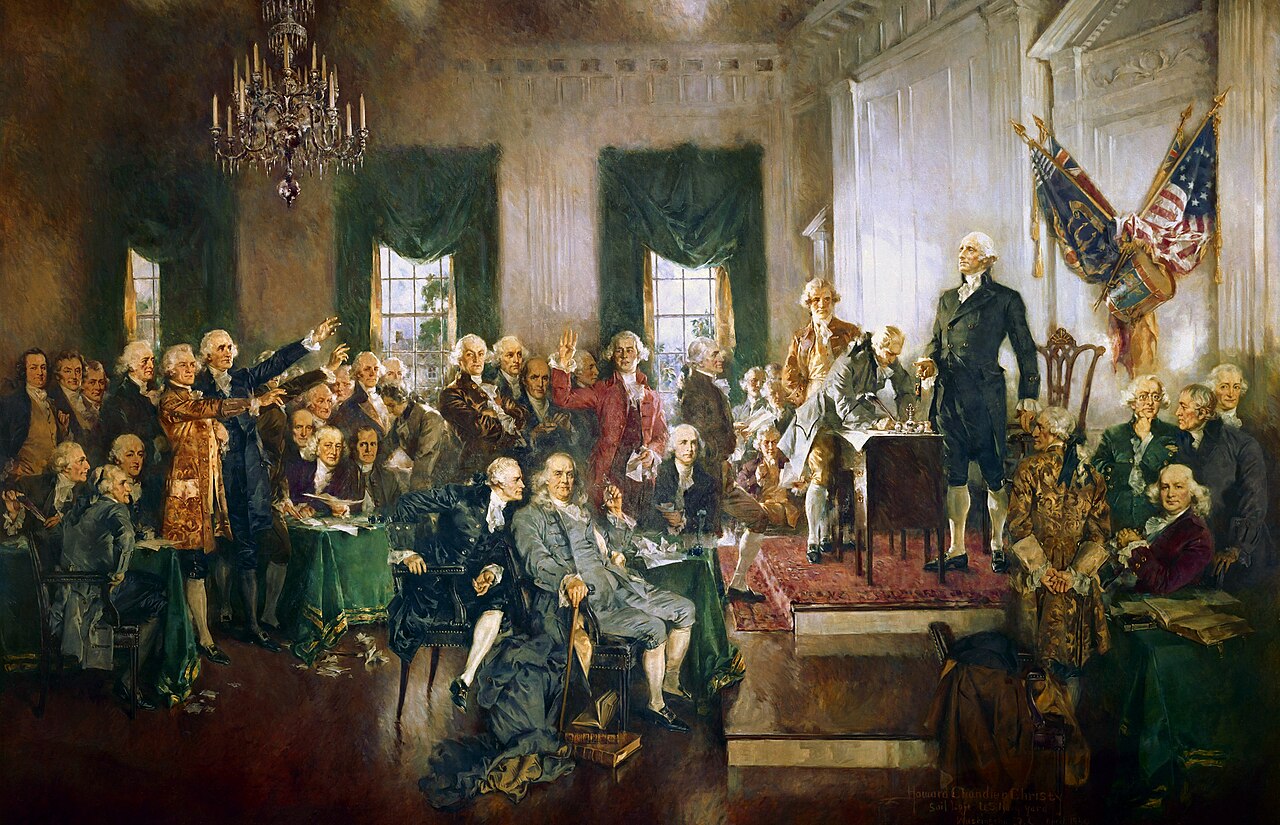
Legacy of the Constitution
- The US Constitution has had a profound and lasting impact on the governance and legal framework of the United States. Its provisions have laid the foundation for the country's democratic system and have continued to shape the nation's principles and practices over the years.
- Ensuring Rights and Protections: One of the most enduring legacies of the Constitution is its Bill of Rights, which guarantees fundamental rights and protections to the citizens of the United States. The first ten amendments, stemming from the anti-Federalists' concerns, ensure crucial rights such as freedom of speech, religion and the press, as well as the right to a fair trial and protection against unreasonable searches and seizures.
- Separation of Powers and Federalism: The Tenth Amendment, which grants powers not granted to the federal government to states, has been crucial in maintaining the balance of power between national and state governments. This principle of federalism, along with the concept of checks and balances in The Federalist Papers, ensures no single branch becomes too powerful.
- Adapting to Change: The Constitution, as outlined in Article V, has been amended to address societal needs, such as voting rights, prohibition and presidential term limits, demonstrating its resilience in reflecting the changing values and priorities of the American people.
- Symbol of Democracy and Liberty: Beyond its legal and structural impact, the US Constitution stands as a symbol of democracy and liberty, both within the United States and across the world. Its emphasis on forming a more perfect union, establishing justice, promoting general welfare and securing the blessings of liberty continues to inspire political movements and constitutional frameworks globally.
Image Sources
- https://upload.wikimedia.org/wikipedia/commons/thumb/6/6c/Constitution_of_the_United_States%2C_page_1.jpg/800px-Constitution_of_the_United_States%2C_page_1.jpg
- https://upload.wikimedia.org/wikipedia/commons/2/21/James_Madison_Portrait2.jpg
- https://upload.wikimedia.org/wikipedia/commons/thumb/9/9d/Scene_at_the_Signing_of_the_Constitution_of_the_United_States.jpg/1280px-Scene_at_the_Signing_of_the_Constitution_of_the_United_States.jpg
Frequently Asked Questions
- What is the US Constitution?
The US Constitution is the supreme law of the United States. It establishes the framework for the organisation of the federal government, outlines the powers of the government and its branches, and protects the rights of citizens.
- What are the main parts of the US Constitution?
The US Constitution consists of a preamble and seven articles. The articles outline the powers and responsibilities of the three branches of government, as well as the relationship between the federal government and the states.
- What is the Bill of Rights?
The Bill of Rights refers to the first 10 amendments to the US Constitution. It guarantees fundamental rights and freedoms such as freedom of speech, religion, and the press, protections against unreasonable searches and seizures, and the right to a fair trial.
